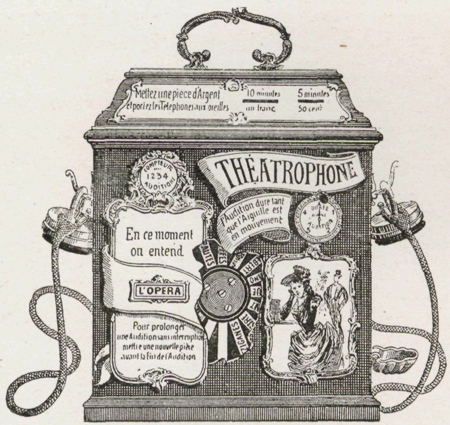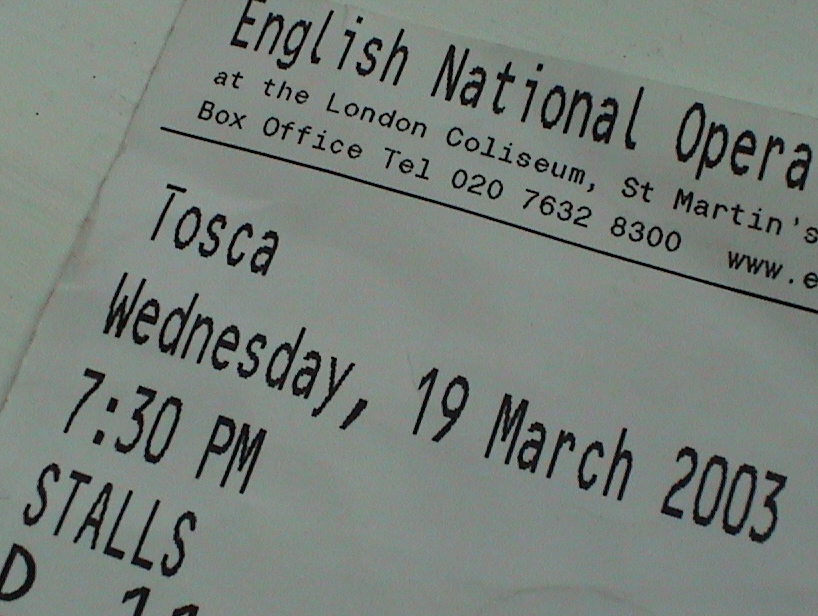
A remarkable story about Victorian media innovation
Radio is changing. The first digital radio platform – DAB – is in danger of being eclipsed before most of us have even bought one. The second wave is evolving fast, but widespread Internet radio is years away so radio stations are investing in web sites and apps. Meanwhile, audiences for radio everywhere are steady but looking fragile and everyone’s waiting for a persuasive mixture of content and convenience to justify the switch to digital. And billions of cheap-to-own FM radios are a huge impediment to switching.
130 years ago, nearly thirty years before the first public radio broadcast, at an international electrical exhibition in Paris, entrepreneur Clément Ader prototyped a package of content delivered on a new platform, the telephone. He called his prototype a ‘telephonic opera’ service because opera performances were the main content (just as they had been in Zurich in 1878, when a performance of Don Pasquale was relayed via telephone only months after its invention). The prototype became a commercial product later in the decade under the name Théâtrophone.
Subscribers to the service, including, I kid you not, Marcel Proust (in his cork-lined room at 102 Boulevard Hausmann), dialled in from their home telephones (a technology that was only a decade old itself) and asked to be put through to one of the participating theatres. They then listened to the evening’s performance live. In stereo. At the time of the original demonstration, Scientific American said:
The singers placed themselves in the mind of the listener, some to the right and others to the left. It’s easy to follow their movements and to indicate exactly, each time that they change their position, the imaginary distance at which they appear to be.
Two separate telephone lines delivered signals from two stage microphones: one right, one left (this Wikipedia entry suggests eighty microphones and, since they weren’t electronic microphones, just crude acoustic ones, that doesn’t sound unreasonable).
A subscriber to an equivalent service in London, Electrophone, described the process:
You lifted your ordinary telephone receiver and said ‘Electrophone please’ and in a moment you were asked which theatre you wanted and in another moment you were in your armchairs around the table listening to musical comedy at the Adelphi…
Theatres, music halls – and, later, places of worship, all over London were wired up to the Electrophone exchange at 34 – 35 Gerard Street in Soho and Electrophone attendants (we’d call them Studio Managers or OB engineers) were stationed in each to position mics and connect subscribers.
If you’d lived in Budapest in the 1890s (and been a wealthy gadget freak) you’d have subscribed to a service called Telefon Hírmondó which, you’ve got to admit, was startlingly like a modern radio network, with content organised into ‘channels’, a daily schedule (including stock quotes, local press, finance, theatrical and sporting news) in addition to the usual operatic performances (what is it with the opera?). There were children’s concerts, acts of worship, folk music, recitals. Advertisements, inevitably, were inserted between juicy news items. The company employed 100 people, with job titles like ‘editor’ and ‘programme controller’ and, at its peak had 6,000 subscribers.
But what’s remarkable for me about these services (there were dozens worldwide) is how closely they resemble the ones we’re building now on The Internet. Clicking ‘play live’ for Radio 3’s nightly live concert is essentially the same as asking the Electrophone ‘attendant in charge’ to put you through to the Wigmore Hall – a personal, two-way circuit connecting you to a live event a long way from home. Nineteenth Century opera nuts were using two-way telepresence to enjoy remote performances that were significantly more immersive than what was to come from terrestrial radio decades later. The spatial separation and specially-designed in-home kit (the ‘Electrophone table’ and Théâtrophone’s special receiver) that came with these services must have made these experiences extraordinarily vivid. Vivid enough for Proust to listen to a performance of Pelléas and Mélisande all the way through in 1911.
They even had pretty sophisticated tiered business models – an extra £5 per season for Covent Garden, for instance (no freemium as far as I can tell, though). These pioneers built a highly immersive Victorian cyberspace on the first of the really big wired networks – and, let’s face it, mostly because they misunderstood what people would actually wind up using their telephones for. The implications for the services we’re designing and promoting now set the mind reeling.
- Google ‘Théâtrophone‘, ‘Electrophone‘ or ‘Telefon Hírmondó‘: you’ll find plenty of web sites about these pre-radio experiments. Here’s a good technical overview of Electrophone, for instance. I owe the inspiration for this post to a terrific Sunday Feature from Radio 3 last year called The Pleasure Telephone, presented by Edward Seckerson. The programme is sadly unavailable. Hunt down a recording if you can find one.
- The picture at the top shows a coin-operated Théâtrophone receiver of the kind that would have been installed in cafes and special listening rooms. All the pics are from the Wikimedia Commons.




